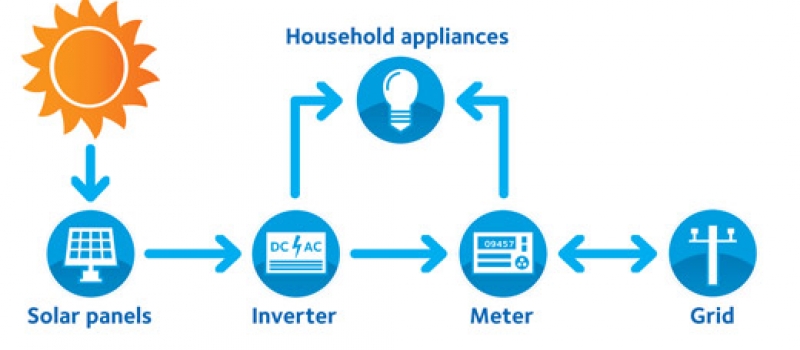How Solar Power Works
Discover how much you can save today with our solar calculator!
Not only that there are many solar power pros and cons but installing solar panels is a great solution to cut carbon pollution, helps create jobs and save money. From a technical point of view solar power allows us to harness the energy from the sun and turn it into electricity to power our homes.
So how exactly do solar panels produce energy?
- Sunlight hits the solar panels
- The energy then flows from the panels to the inverter, which turns the electricity into a usable current for your home appliances
- The electricity is available to use in your home
Among the many benefits of solar power, one great feature is that you can be credited with producing electricity that you don’t consume. Surplus electricity flows back to the grid and becomes available for other people in the area to use. Your meter tracks the energy you use and produce, so you can receive credits from your utility company for any electricity you send to the grid. This is called net metering.
There is a question of how long can a solar panel last and for how long they continue to produce electricity? The industry average is at least 25 years, but it’s not unusual for some panels to last longer.
What Are the Basic Components of a Solar System?
There are four basic components in residential solar PV systems:
- Solar photovoltaic (PV) panels – PV panels collect energy from the sun and create electricity
- Solar Inverter – inverters switch the electrical current to one we can use for our appliances
- Racking & mounting system (not shown) – most homeowners have their panels mounted directly to their roof, and the panels do not move during the day.
- Energy meter & monitoring system – homes with solar power have special meters that measure the energy they produce and consume.The performance monitoring system allows you to track the panels’ energy output and any changes in system performance, and also tracks how much energy is fed out from and into the grid.
How do Solar Panels Works?
Panels are able to harness energy from the sun through a unique property of the element silicon. Solar panels are made of silicon cells, and silicon can create an electric charge when it’s hit by sunlight. The electric charge that’s created is turned into an electric current inside of the panels. That current then flows into a solar inverter, which generates the type of electric current we use in our homes. Through this process, the energy from the sun is converted into useable electricity!
How Solar Power Works

How is the System Installed?
Once you’ve weighed the advantages and disadvantages of solar energy and made the decision to switch to solar, your qualified installer will conduct a site visit to determine the layout and size of your system. The actual installation process can be between a few hours to a couple of days.




